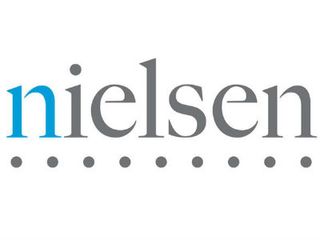Nielsen: Viewership Rises After Live-Plus-7

Content providers take heed – according to TV measurement stalwart Nielsen, the proliferation of digital video recorders, video on demand and digital content have pushed traditional viewing habits out the window, with some shows attracting their biggest gains in audience well beyond the traditional seven-days after original air.
In advertising circles, the Live-plus-7-day (L7) rating period is becoming increasingly irrelevant as viewers watch content on a variety of devices at different times.
In a press briefing Tuesday, Nielsen senior vice president of audience insights Glenn Enoch unveiled research from the measurement company’s clients as part of its Total Audience Measurement initiative showing viewership can rise after the L7 window between from 4% to 58% depending on the genre of programming. Enoch said that in the small sample of programming, reality/competition shows fared the worst with 18-49 year-olds in extending viewing, with only a 4% audience gain beyond seven days. The biggest increase came from animated comedy shows, where 58% of the audience lift came between day eight and day 118.
READ MORE: Nielsen dismisses "noise" about total audience delays.
Enoch said that by far the majority of viewing came in the first week after original air – as much as 88% for reality shows. But as viewing habits change, viewers – especially younger viewers – are time-shifting more often and for longer periods of time.
VOD is the primary driver for the extended viewing period, Enoch said. DVR usage drops dramatically after the seventh day after original air, while VOD usage has its greatest lift period after seven days.
VOD watchers are also more engaged: they watch an average of 30 minutes while those who view live TV watch an average of 15 minutes, according to Nielsen.
Multichannel Newsletter
The smarter way to stay on top of the multichannel video marketplace. Sign up below.
Nielsen began making its Total Audience Measurement products available to a select number of clients in January, who have been evaluating the data.
Senior vice president of product leadership Kelly Abcarian said Nielsen’s total audience offering will be more widely available in the third quarter of this year.
“This enables them to understand how that audience builds across time,” Abcarian said. “So the networks and the broadcasters and the content owners can have more firepower to talk about how their audience looks across time so they can better positon and plan and sell that out to advertisers. Secondly, the advertisers want to access younger audiences, they want access to more available inventory. That’s what this data set enables them to understand across both the buy and sell side.”
READ MORE: Five ways to prepare for the audience measurement revolution.
One thing that content providers can take from the data is that it may behoove them to make full current seasons of their shows available on demand to distributors to take full advantage of viewership trends.
Abcarian said that while some of the content showed no VOD viewing at all, that wasn’t because viewers didn’t want to watch the show on demand, but that it wasn’t available on demand.
“I think this data will give them much better insights around how to make the content available but even more importantly how to monetize that content with the advertisers,” Abcarian said.
Nielsen has been conducting client advisory boards, where companies who have been evaluating the data meet regularly to talk about their findings and new uses for the data. Jessica Hogue, also a senior vice present of product leadership at Nielsen, said the level of cooperation has been encouraging.
“We’re really quite pleased with the level of engagement we have across all aspects of our program,” Hogue said. “We have many clients that are ready for evaluation and are starting to look at that data already today. We continue to grow our pipeline of clients that are integrating for VOD and digital measurement across the board. We think that will continue to grow because our clients are continuing to evolve the way they distribute their content.”
